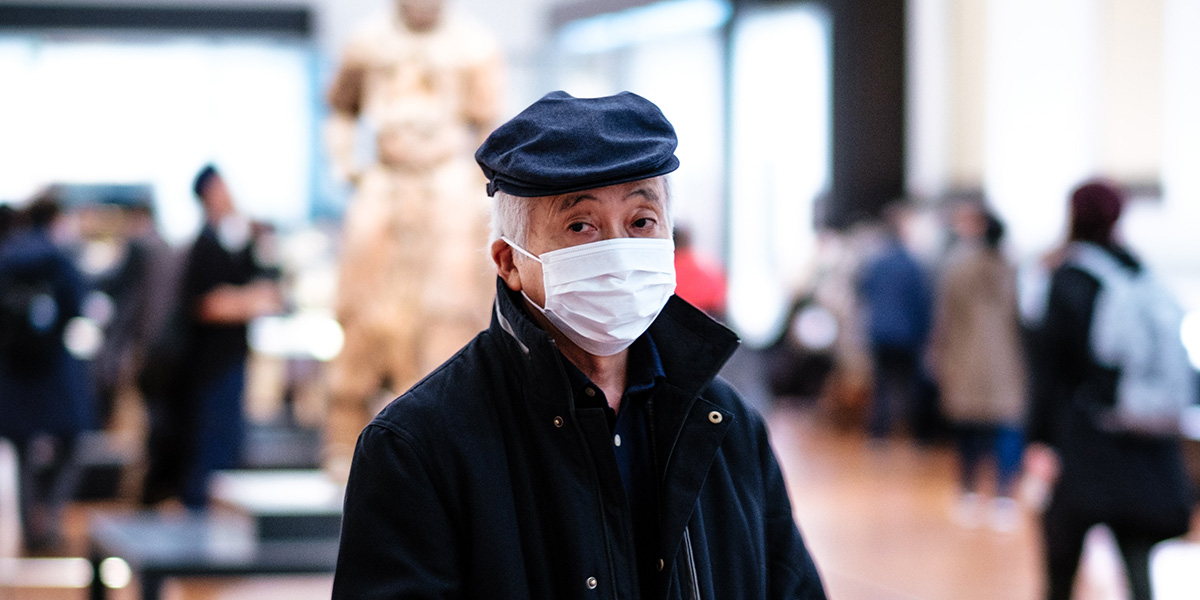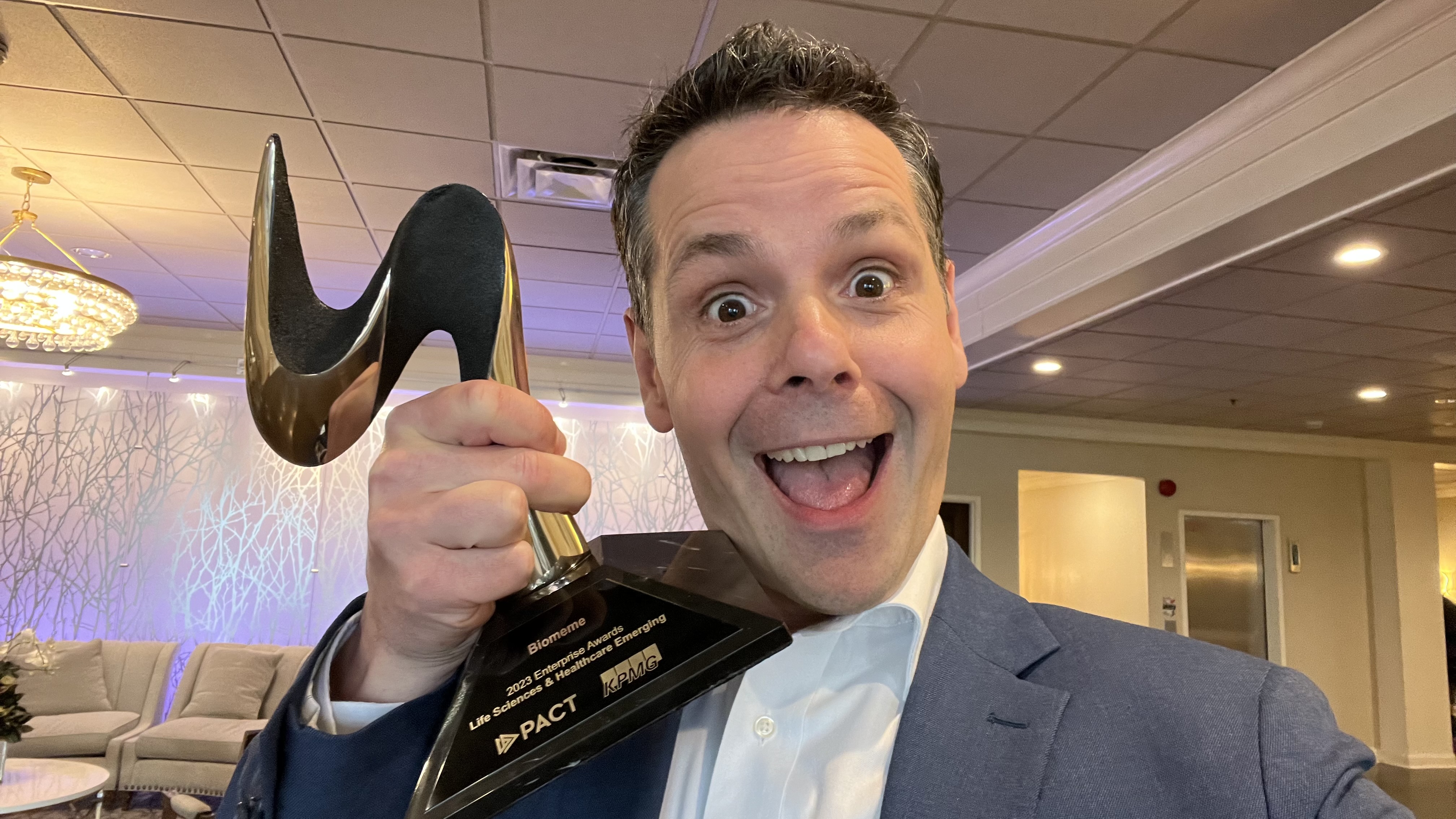
Written By: Biomeme Staff
SARS-CoV-2 (also known as COVID-19, 2019-nCoV, or Wuhan coronavirus) has now infected over 40,000 patients and unfortunately, killed more than 1,000 people. Fast, accurate detection at the point of need is essential to prevent the disease from spreading - especially as hospitals and centralized quarantine facilities are overwhelmed.
That’s why Jesse vanWestrienen, Biomeme’s co-founder and Biology Lead, prioritized developing a test for Biomeme’s portable, field-ready platform over the course of 2-weeks. We caught up with Jesse to learn more about why and how he developed Biomeme’s COVID-19 Go-Strips.
 Jesse: The main impetus was knowing there was going to be large concern within the international community that if this Novel Coronavirus started to expand and become more and more of a global health threat, then people were going to need access to fast, quick, and most importantly, dispersed diagnostic capabilities on the spot.
Jesse: The main impetus was knowing there was going to be large concern within the international community that if this Novel Coronavirus started to expand and become more and more of a global health threat, then people were going to need access to fast, quick, and most importantly, dispersed diagnostic capabilities on the spot.
Jesse: Out of the three targets, two of them were specific to this Novel 2019 Coronavirus. After looking at the genome sequence that was released in January, I was able to do in silico analysis to align the sequence with other closely related virus genome sequences. It had also been published that the 2019 Coronavirus was most closely related to SARS Coronavirus, so I aligned those genomes along with some of the other Coronaviruses that are known to infect people. I targeted regions of the genome that were different between this Coronavirus and the others with the goal of making this assay highly specific to the Novel 2019 Coronavirus and not cross-reactive to the other human Coronaviruses, like SARS.
The third target included is a MS2 bacteriophage, used as a control. You can add a lyophilized MS2 pellet into your sample and it’s RNA will be extracted with your sample’s RNA - in this case most likely nasal or a respiratory sample. MS2 is a good control for the entire workflow, sample prep all the way through your PCR reaction. Essentially, you can conveniently control for both RNA extraction and RT-PCR.
To maximize space and enable the most samples to be run simultaneously we decided to triplex the three assays into a single PCR reaction. The three targets in the COVID-19 Go-Strips are:
SARS-CoV-2-Orf1ab gene
SARS-CoV-2-S gene
MS2 bacteriophage as an RNA extraction and RT-PCR control
We’re also able to produce the panel in a 96-well plate format for use on lab-based PCR thermocyclers. A lot of our collaborators like the idea of running a single assay chemistry across all of their lab-based and field PCR platforms.
Jesse: The approach is the same regardless of the end implementation - whether it's our field-ready thermocyclers or some other large format thermocycler - it all starts with a sequence. So, you get gene sequences and you do the alignments, which means pulling in sequences of targets that you want to detect. Those are the inclusive targets of interest or sequences of interest.
Then, you want to include your exclusive sequence, so I'd mentioned earlier you don’t want the 2019 Coronavirus test to detect SARS. If you don't want to detect SARS Coronavirus then you design your assay around those requirements.
Jesse: PCR is the go-to chemistry to use in molecular diagnostics. One of the main reasons why my co-founders and I founded Biomeme was that we wanted real-time PCR to be very accessible.
The nice thing about Biomeme’s test is that once the PCR assay has been developed and we lyophilize it, then it's shelf-stable and ready to go! You just add your RNA because your primer and probe sets are all included in our lyophilized assay, and then again you can run that on any real-time thermocycler that contains the appropriate detection channels. Other assays are called “wet mixes” which means you have to add your master mix, primers and probes, and RNA which could cause a variety of issues if there are any mistakes.
Also, with our multiplexed assay, you get two different genes of the 2019 Coronavirus which gives you more confidence that you're actually detecting the Coronavirus versus only testing for one strain. Testing these targets simultaneously means you can increase the number of samples that you test (higher throughput) and the cost per sample goes down.
Jesse: I wouldn't say there were any challenges, this was pretty straightforward! There was a lot of genetic diversity between this 2019 Coronavirus and its most closely related SARS Coronavirus, so there was no challenge in finding regions in the genetic sequence that were unique to this new Novel Coronavirus that paired with a whole genome sequencing. It's been pretty incredible these days because you can quickly get synthetic DNA synthesized so it was actually super smooth and fast.
Now with all that being said this is all with synthetic targets, so this test has not been validated with virus or human samples at this point. Given the amount of sequence that's been released, however, we have a lot of confidence that it will accomplish what we are setting out to accomplish.
Jesse: Thankfully the scientific community publishes things very quickly, so the genome sequence for 2019 Coronavirus was already available in mid-January. I started working on developing the assay on January 23rd, so it took about two weeks around the clock to fully develop it.

In the old days, it was a lot slower and took longer because it was more complicated and oftentimes groups had to culture viruses. That meant you had to take a patient sample where all you knew was that they were clearly sick and you'd have to then try to grow the virus outside of the host, which can be done, but it's really difficult to do that. There are some viruses that just won't grow well outside of the host.
So, it's really incredible that now when people are getting sick and we don't know what it is, scientists have the tools available to sequence the virus within weeks of people getting infected, and develop tests to detect it.
Jesse: I would say real-time PCR is still not rapid enough. Most diagnostics are still being done in central labs rather than on-site, so you have to take a sample from a patient wherever they are and you have to feed it into that central lab model which means you're probably not going to get a result for many hours up to days later. So right now, since physicians don’t have the ability to get answers quickly, they’re putting people in quarantine. With this particular virus, there’s a 14-day incubation period which means people could be spreading the disease before experiencing symptoms.
Our goal is to make real-time PCR accessible on-site so people can get answers on the spot to make better decisions. In this case, determining if someone should be quarantined or if they don’t have the virus and therefore let them go on their way without unnecessarily quarantining them.
Biomeme’s end-to-end system from sample prep to analyzing results can provide real-time results in 45 minutes starting with our M1 Sample Prep Cartridge for RNA. This enables you to extract and purify RNA from your sample in just a few minutes.
From there, our Biomeme SARS-CoV-2 Go-Strips are available now with no minimum order quantity. Biomeme Go-Strips are compatible with our field-ready Franklin™ Thermocycler, which can detect up to 27 targets with easy-to-read results on our Biomeme Go smartphone app. The Franklin could run 9 samples simultaneously so, together with sample prep time, you’re talking about 9 samples tested per hour end-to-end.
Want to configure your own custom assay? Now you can port your real-time qPCR assays into our field-friendly Go-Strip format with Biomeme's Go-Strips Configurator. With custom Go-Strips, there is no need for refrigeration, lab equipment, or mixing wet reagents in the field.
Biomeme products are for Research Use Only. Not for use in human or veterinary diagnostic procedures.
Get the latest tips from Biomeme shipped right to your inbox

When people think about global health, they tend to think about far-flung locales and communities of people different from their own. But the biggest challenges to global health like pandemic...

A lot can change in a decade. We started 10 years ago as a venture among friends and family, each of whom was deeply and personally committed to impacting global health, each in their own way. Since...

As a company, we measure our progress in the diagnostics we develop and deliver and the impact we have on global health. But awards are nice, too. So we were humbled and honored to receive the PACT...
401 North Broad St Suite 222 Philadelphia, PA 19108